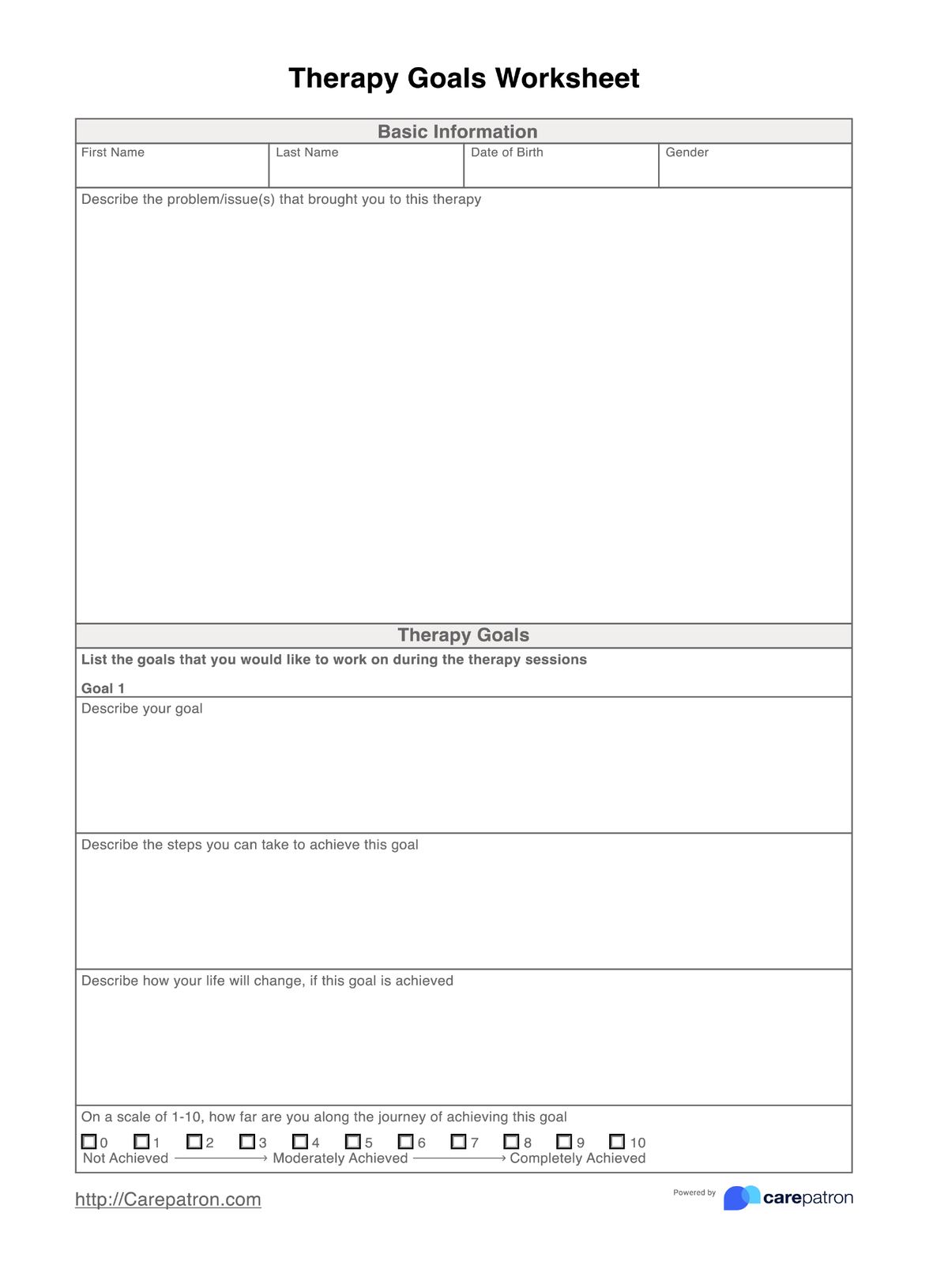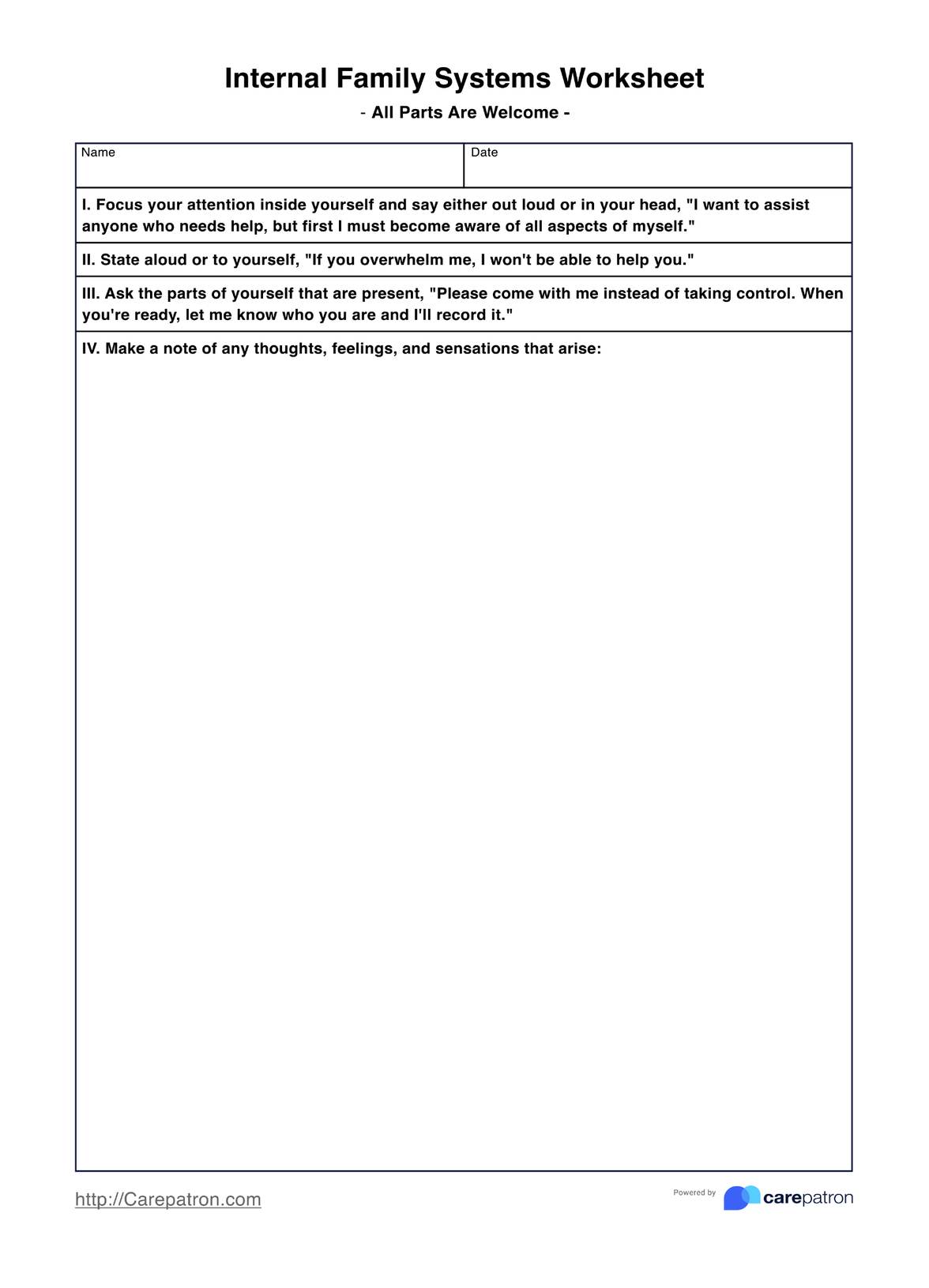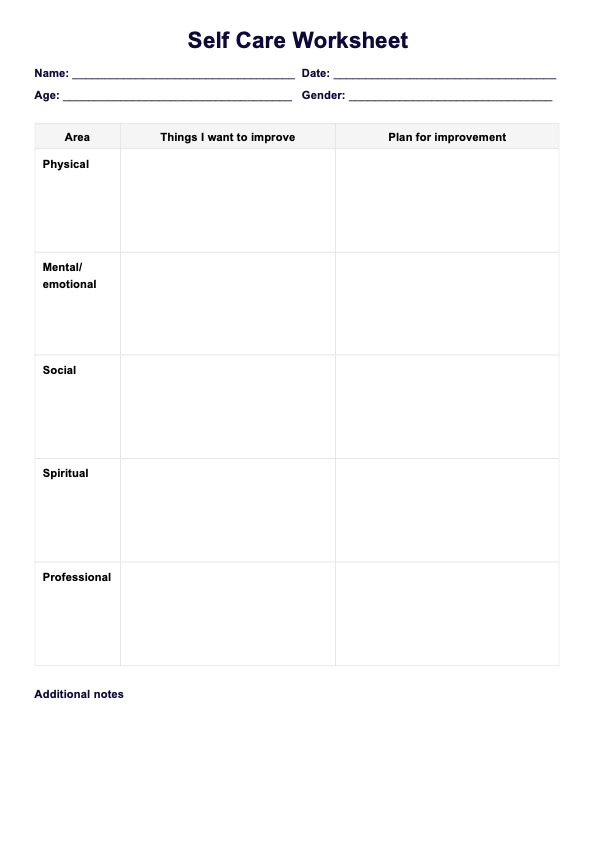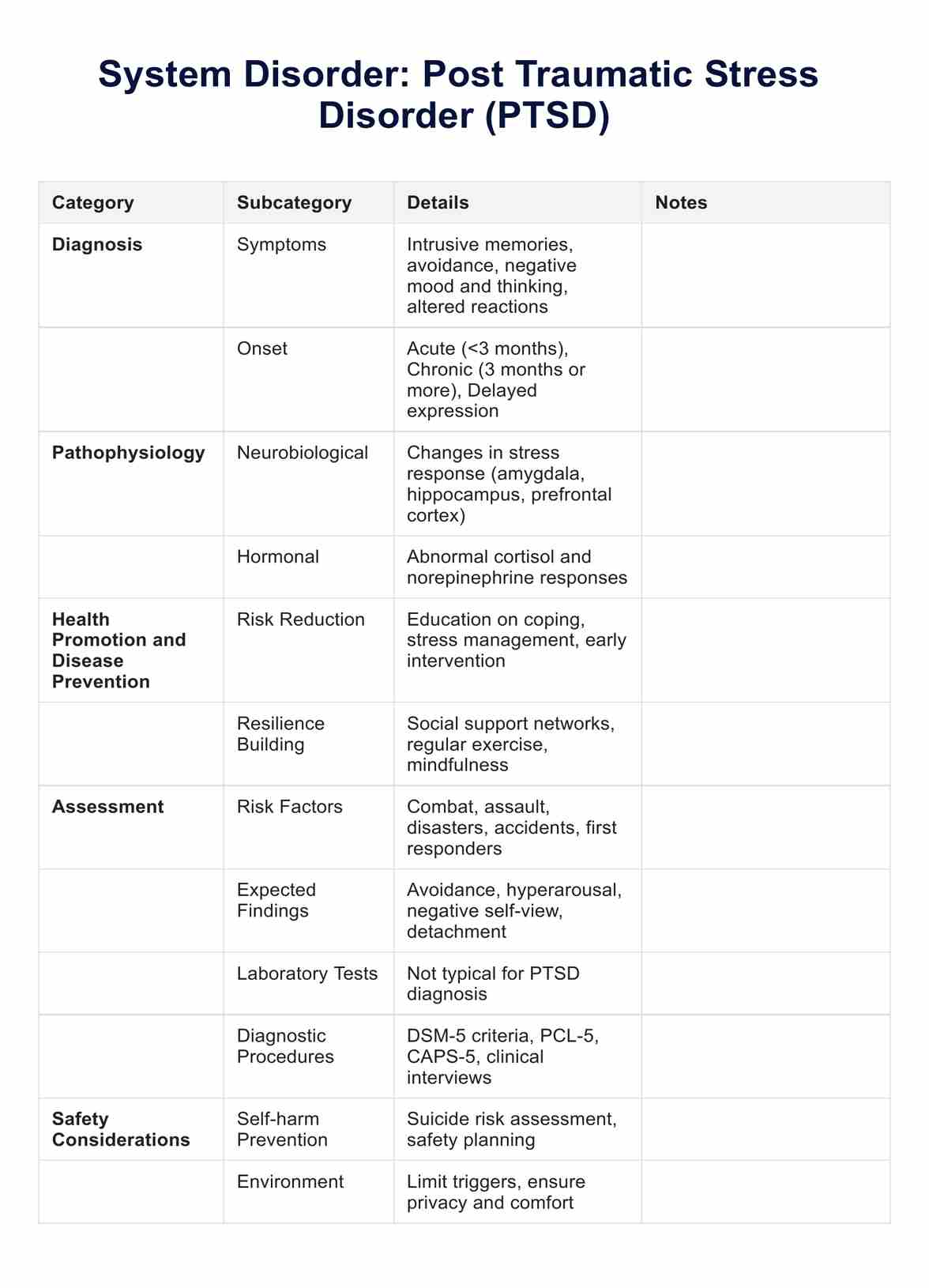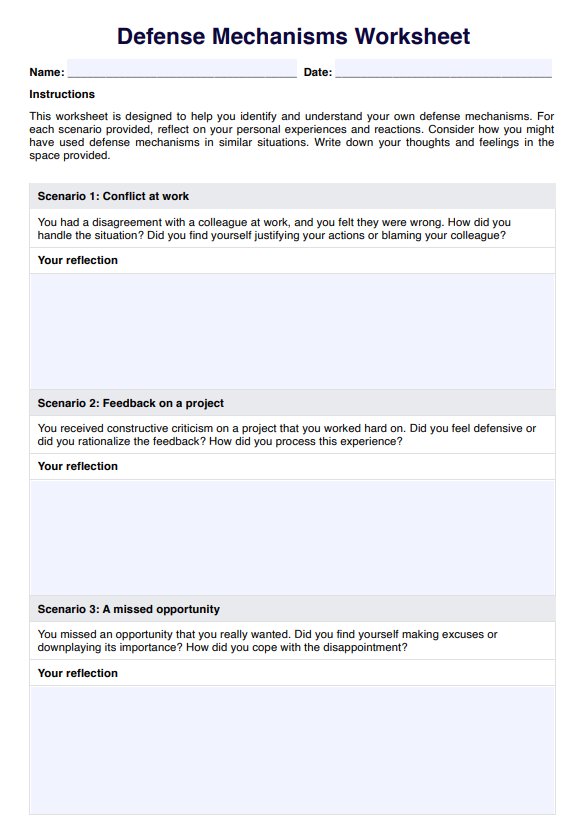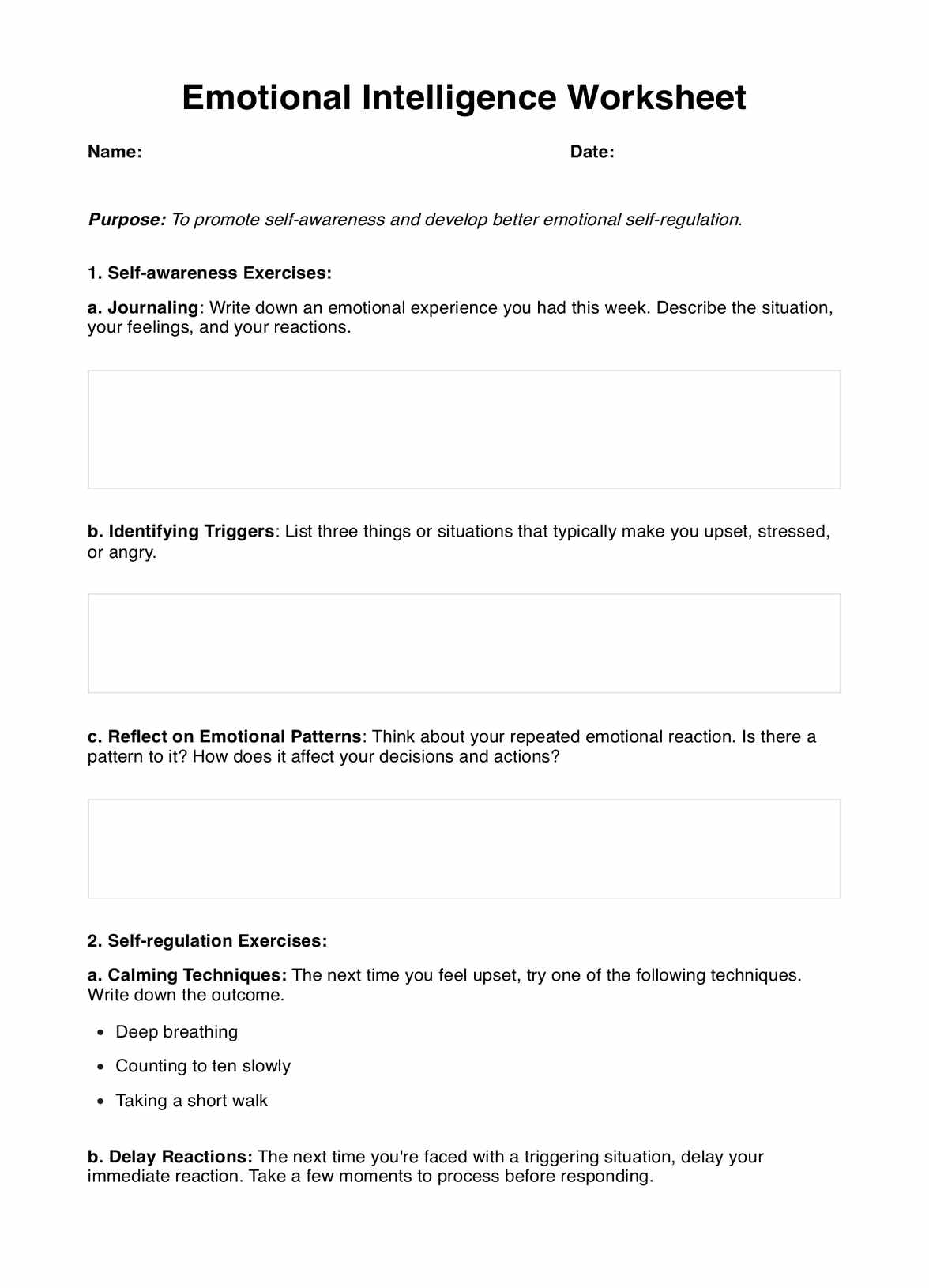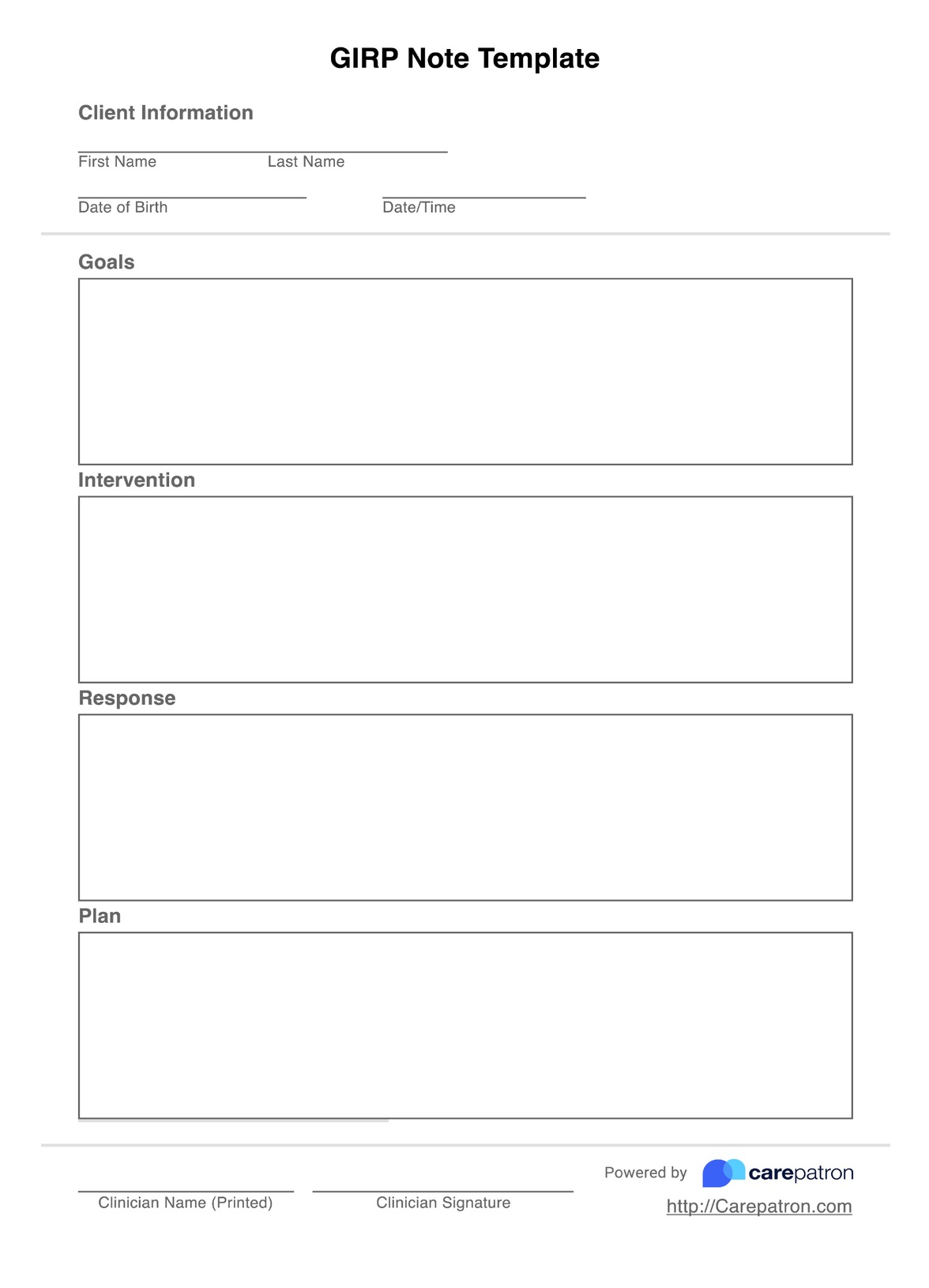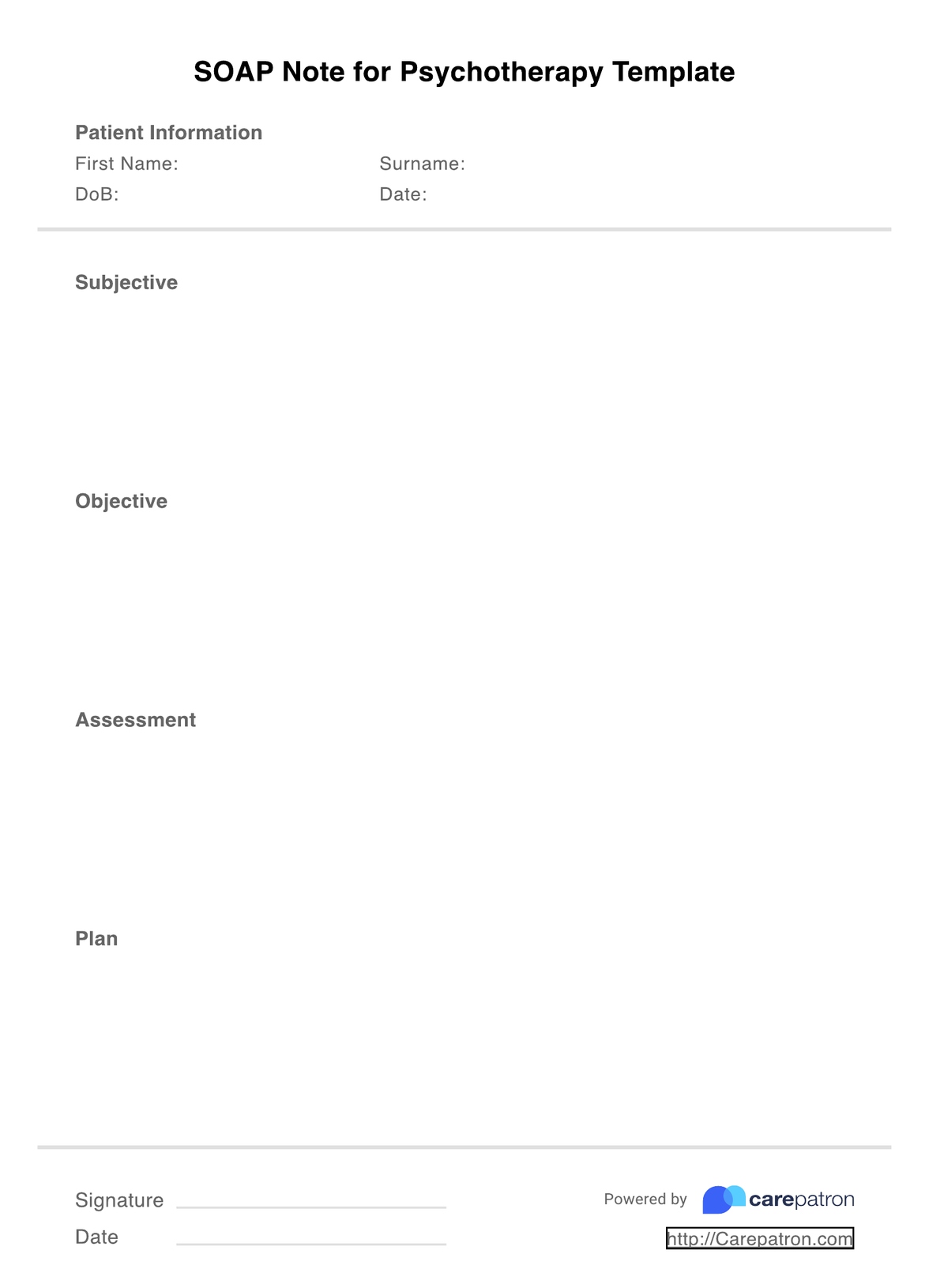Unpacking Your Despair and Hopelessness PTSD Worksheet
Help your patient with PTSD examine their despair using the Unpacking Your Despair and Hopelessness PTSD Worksheet!


What are Trauma and PTSD?
Trauma can be physical or mental, but for this guide, we’ll focus on the mental kind of trauma.
When we speak of trauma here, we’re referring to the psychological and emotional responses (which vary in intensity, depending on the person) to specific events and experiences that they consider overwhelming, horrifying, distressing, and/or violating. Examples of such events include being sexually harassed and assaulted, realizing you’ve been emotionally manipulated for years, participating in bloody and pointless wars, being the victim of a hate crime, and losing everything to a natural disaster.
The psychological and emotional scars such events can leave on people will make it difficult for the traumatized to cope! And these scars can be triggered from time to time by their memories, senses, and even by being near where their traumatic experiences took place.
Trauma will likely lead to a mental health condition known as Post-Traumatic Stress Disorder, or PTSD for short. It’s a complex problem characterized by a wide variety of symptoms, several related to despair and hopelessness. Here are some signs that a person might have:
- Severe depression
- Feelings of sadness and loneliness
- Feelings of emptiness and meaninglessness
- The tendency to isolate themselves from loved ones and friends
- The tendency to isolate themselves from the world
- The tendency to disassociate
- The tendency to have emotional outbursts
- An aversion to happiness and other positive emotions
- Thoughts of self-harm/suicide
- Trouble sleeping
- A loss of interest in anything
For a person to work through their trauma, they need to find healthy ways of coping with their PTSD symptoms and triggers and manage them, but being able to cope and manage them healthily is easier said than done.
Unpacking Your Despair and Hopelessness PTSD Worksheet Template
Unpacking Your Despair and Hopelessness PTSD Worksheet Example
How to use the Unpacking Your Despair and Hopelessness PTSD Worksheet:
If you’re a therapist treating patients using Cognitive Behavioral Therapy or other types of psychotherapy to help them work through their trauma, one of your roadblocks is getting them to talk and become motivated to confront their trauma, so it’s best to take it slow and go at a pace that’s comfortable for them. One way for you to slowly ease them into confronting their trauma is to use worksheets!
In the case of this guide, their PTSD symptoms related to despair and hopelessness are the focus, and the Unpacking Your Despair and Hopelessness PTSD Worksheet will allow them to examine their feelings. Discussing their emotions will make them aware of how they currently view their life and the world, how they respond to their despair and hopelessness (positively or negatively), and how these feelings have affected their relationships.
For this worksheet, all they have to do is answer the following guide questions/prompts:
- Describe the feeling or feelings of despair and hopelessness that you remember. What were the situations that made you feel despair and hopelessness?
- What did you do in those situations? What did you think about? How did you act?
- Did these thoughts and actions motivate you to confront your despair and hopelessness? If so, how?
- Can you notice if other people are in despair and feeling hopeless? If so, what do you do about what you’ve noticed?
- How do your despair and hopelessness influence your relationships?
- OPTIONAL: Do you have coping strategies for your PTSD-related despair and hopelessness symptoms? It’s okay if you don’t as of now. We’ll work together to help you cope.
Therapists, counselors, or adjacent mental healthcare professionals must remind patients engaging with this worksheet to write as descriptively as possible.
When is it best to use the Unpacking Your Despair and Hopelessness PTSD Worksheet?
If you’re a psychologist, psychiatrist, therapist, counselor, or a similar mental healthcare professional, the best time to issue the Unpacking Your Despair and Hopelessness PTSD Worksheet would be during the early stages of your treatment/therapy/counseling program. These would be when you’re still learning more about your patient, especially their feelings, whenever their PTSD is triggered.
This particular worksheet is best used during the early stages because the questions are geared toward getting patients to discuss and state what makes them feel despair, what they do and think about whenever they are in despair and feeling hopeless, and how these feelings have impacted their relationships. Mental healthcare professionals need to get as much information as possible from their patients to tackle the nuances of their PTSD.
You can use this worksheet anytime, even if you’re not a mental healthcare professional! The template we made is free, so you can download it anytime and use it whenever you want, wherever you want.
It’s possible to be overwhelmed by PTSD to the point that you no longer have the energy to think about your despair and hopelessness properly. That’s understandable! This worksheet should help you frame what you want to say about these feelings, so keep a copy in your bag or mobile device so you can answer it when you feel like the time is right.
What are the benefits of using the Unpacking Your Despair and Hopelessness PTSD Worksheet?
It’s a nifty and inexpensive tool to have, not to mention easy to use.
The Unpacking Your Despair and Hopelessness PTSD Worksheet is a helpful tool! If you go paperless, it’ll only cost you a bit to print several copies or none at all! It’s good to have them ready for any patients with PTSD experiencing feelings of despair and hopelessness.
The worksheet itself doesn’t require anything special, either. All a person needs to do is write down their responses to the guide questions/prompts with as much detail as possible. That’s it!
It can help professionals understand what’s causing their patients to feel despair and hopelessness.
Using the Unpacking Your Despair and Hopelessness PTSD Worksheet will help mental healthcare professionals learn more about their patients and their PTSD-related despair and hopelessness. They will learn about their triggers, what they think about and do when feeling hopeless and in despair, how these symptoms affect their relationships, and whether they can cope healthily. Their answers can help professionals ask the necessary follow-up questions to get more information to explain the situation of their patients. Knowing as much as possible will help them determine what they can do to help their patients work through their trauma.
It will yield better results when paired with other PTSD worksheets.
Despair and hopelessness are likely not the only feelings that patients with PTSD have to deal with. This worksheet focuses only on despair and hopelessness but can have other positive or negative emotions. Using other PTSD worksheets similar to this one should help you cover more ground and learn the nuances of each patient’s PTSD. By having a more nuanced perspective, professionals will be able to find better ways to tackle the PTSD of each patient and tailor-fit each treatment plan/program.
Applying this PTSD worksheet template can enhance your practice and client outcomes. It helps in systematically addressing trauma-related issues.
Commonly asked questions
It would be best to give the patient the time and space they need to accomplish it. This worksheet asks them to write about their despair and hopelessness, which is hard enough to discuss in conversation. If you need to set a deadline, go with what your patient is comfortable with. It’s best not to give them unneeded pressure to discuss something that already puts them on edge.
Based on the instructions, it shouldn’t be. Whatever difficulty they will encounter will come from their PTSD. Thinking about their trauma and its associated memories, feelings, and behaviors might prevent them from talking about it quickly.
Professionals need to ensure that the patients feel that they are in a safe and non-judgmental space and that they can trust the professionals. They should also provide them with the support they need. Doing so will help motivate them to examine their despair and guilt, especially if they know they have someone in their corner.
Here are examples of PTSD worksheets that you can issue alongside the Unpacking Your Despair and Hopelessness PTSD Worksheet:
- Unpacking Your Anxiety
- Unpacking Your Guilt
- Unpacking Your Shame
- Unpacking Your Empathy
- Unpacking Your Spite
- Unpacking Your Pride
- Unpacking Your Trust
Download our templates for those and have them readily available for your patients!


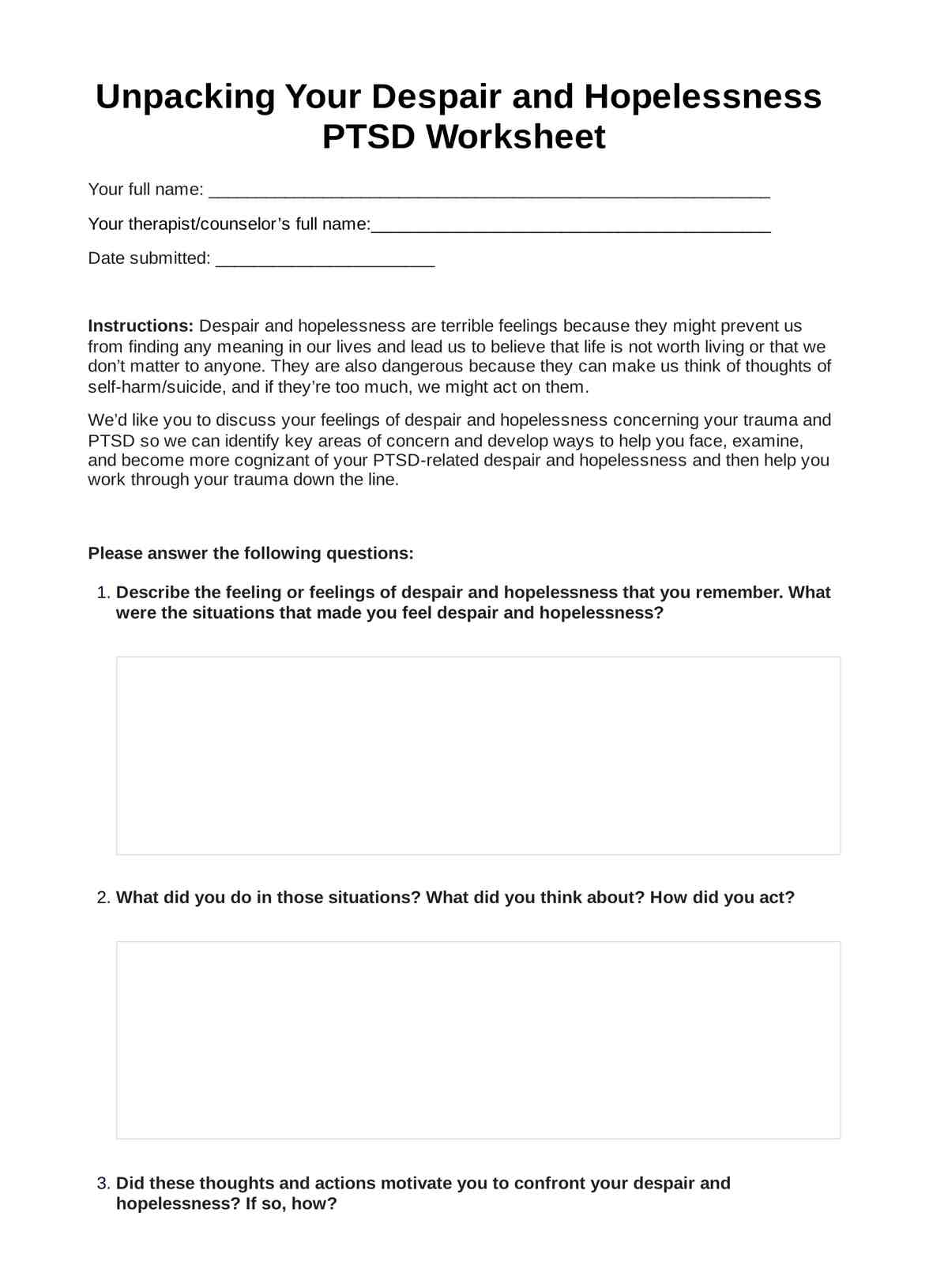
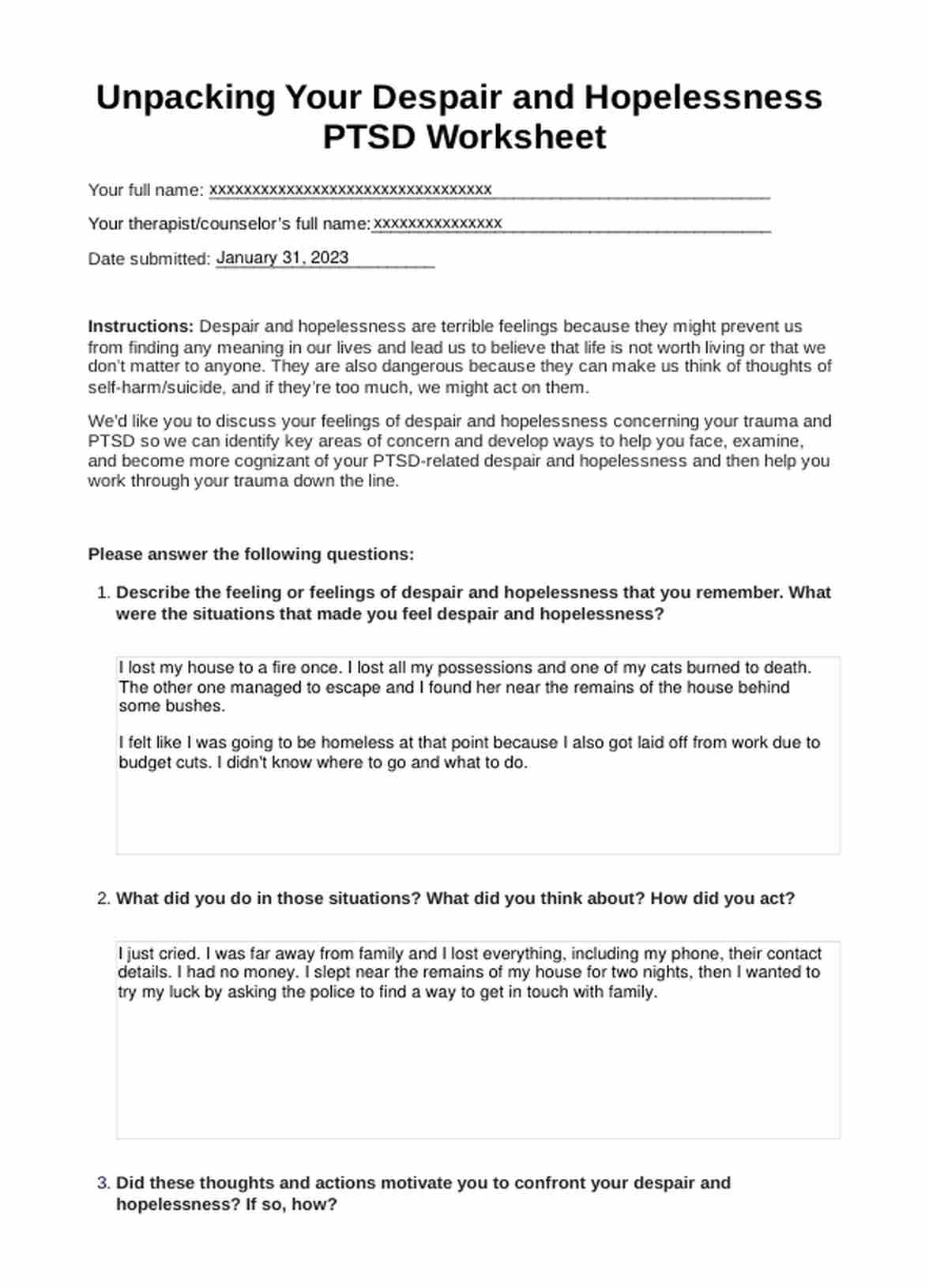
















-template.jpg)




















































































